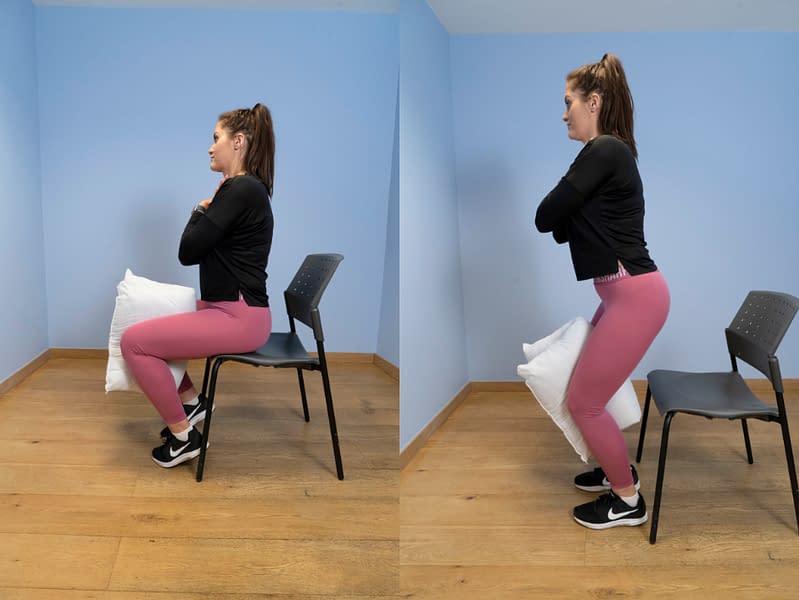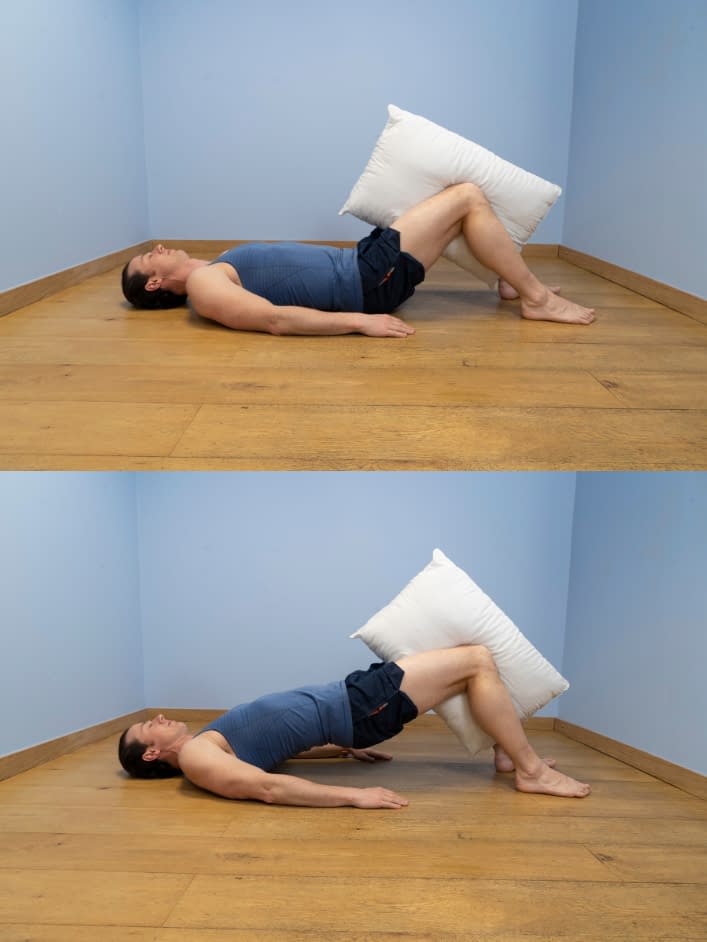Bowed Knees Treatment Plan
Aim to perform this programme a minimum of once per day unless prescribed otherwise. As with any new exercise, start slowly (repetitions as able) and build up as you are able within the guidelines below.
Pain should not exceed 4/10 whilst completing this exercise programme.
Perform this exercise up to 10 times, rest for 1 minute. Repeat routine 2-3 times.
1. Sit to stand with pillow between the knees
- Sit in a stable chair that is at a convenient height for you to rise from.
- Shuffle forward in the chair so that your feet are directly under your knees and place a pillow between your knees.
- In a controlled manner, initiate a standing motion by shifting your weight forward and pushing down through your feet – hold a gentle pressure on the pillow throughout by pressing the knees inwards.
- As you rise, transition to standing upright by pushing your hips forward.
- Then, slowly lower yourself back down towards the chair by pushing your hips backwards and controlling the movement using your thigh muscles.
- Gently touch your buttocks on the chair’s surface and repeat.
Perform this exercise up to 15 times, rest for 1 minute. Repeat routine 2-3 times.
2. Hip bridge with a pillow between the knees
- Lie on your back on the floor or bed with feet planted, knees bent at 90 degrees and your arms down by your side – have the feet and knees hip-width apart and a pillow between the knees.
- Whilst maintaining moderate pressure on the pillow, raise your hips up towards the ceiling by pushing through your heels and squeezing your buttock muscles.
- Once your hips form a straight line with the shoulders and knees, hold for 5 seconds before slowly lowering your hips back down.
Perform this exercise up to 15 times, rest for 1 minute. Repeat routine 2-3 times.
3. Step Up
- Stand at the bottom of a step facing it – hold on to the wall/banister if required for balance and/or support.
- Lift the affected leg and place the foot of the leading leg fully on the step.
- Straighten the leading leg by squeezing the thigh and buttock muscles as you rise on to the step and bring the trailing leg up to standing.
- Try to ensure the knee of the leg being exercised follows the direction of the foot.
- Reverse the movement carefully and with control, placing emphasis on using the standing leg.
We recommend consulting a musculoskeletal physiotherapist to ensure exercises are best suited to your recovery. If you are carrying out an exercise regime without consulting a healthcare professional, you do so at your own risk. If you have any concerns whilst completing these exercises, please contact a healthcare professional.


